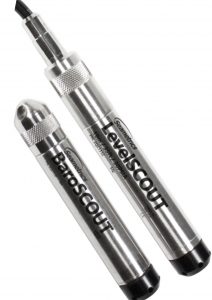A pressure transducer, otherwise known as a pressure sensor, is a device that measures the pressure of a fluid, indicating the force the fluid is exerting on surfaces in contact with it. Pressure transducers are used in many control and monitoring applications including flow, level, and pump systems. They come in a variety of shapes, sizes and offer varying abilities.
When selecting a pressure transducer, one important factor to consider is whether venting is necessary to ensure optimum performance and accuracy are achieved in a particular application. Venting refers to compensating for barometric pressure. What does this mean to the user and their site? Do they, or don’t they, need barometric compensation? When should a pressure transducer be vented?
What is barometric pressure?
Simply put, barometric pressure is the weight of the air column directly above the earth’s surface. Also called atmospheric pressure. We use the term barometric as the pressure is commonly measured with a barometer.
Why does barometric pressure affect pressure transducer readings?
As the pressure of the atmosphere changes above the water, it exerts pressure on the water as well. Water being largely non-compressible will directly apply that pressure to anything below the water’s surface.
Barometric pressure at sea level generally ranges from 13.75 PSI to 15.34 PSI with an average of 14.7PSI. When we look at PSI in water, 1 PSI = 2.31ft of water. Therefore, a barometric pressure change of 1 PSI on a non-vented sensor could result in a false change on the sensor of around 2.3 ft. On a 10ft range sensor, this inaccuracy is huge; to a 600ft range sensor, not so much. So how we compensate for this comes down to venting, or other forms of compensation.
Types of Pressure/Level Sensors:
There are two main types of pressure/level sensors, Gauged and Absolute, also known as Vented and Non-Vented, PSIG and PSIA.
Gauged (Vented, PSIG)
-
- Refers to sensor with vent line running through cable to the surface
- Vent Line allows for barometric pressure to be compensated by allowing barometric pressure to change behind sensor
- Allows for smaller more accurate pressure ranges
- Vent tubes require a desiccant or Aneroid Bellows, so moisture does not collect in tube and damage the internals of the sensor
Absolute (Non-Vented, PSIA)
-
- Pressure sensor is not compensated via vent line
- Less maintenance required
- Will see barometric pressure swings, less of issue with higher PSI sensors
- Can be used without a direct read cable
- Ideal for pipe pressure measurement with a thread in sensor
- Can be compensated with separate Barometric Sensor and software
When is venting important?
If a user is just running a slug test or a pumping test on wells, that is usually completed in one day and there may be no need for barometric compensation. Sure, it helps, but largely not much will change in a day unless you have a rapidly moving storm front moving through. However, for long term, shallow water applications it does become very important to compensate for.
If you don’t want a vent line, what else can you do to compensate for barometric pressure?
Vent lines are a great, automatic way to compensate for barometric pressure. However, they have their drawbacks. For one, the addition of a vent tube and the provisions to keep the vent tube dry cost more per foot of cable than a cable that does not. This cost can be dollars per meter of cable. Secondly, there is the maintenance of the system. Since vent tubes represent a pathway for water to get into the sensor, they must be above water and have a desiccant on the end or bellows. Both need to be inspected and replaced as needed. Something some users are not aware of, or just forget to do.
The answer to this, is the Barometric Sensor. Having a barometric pressure sensor to compensate the readings is a newer solution and a great one for non-vented sensors. By having another sensor log the barometric pressure swings, the data can be used to compensate the absolute sensor. This frees the user up to deploy the sensor with direct read cable, or just a suspension cable, and they can hide the sensor better.
Seametrics Offers Both Options:
Seametrics has been making quality pressure and level sensors for decades, and offers both vented and non-vented sensors. Below is a breakdown of PSIA and PSIG sensors offered, and our Barometric Sensor and Software that can be used for compensation.
By Jassen Savoie, Environmental Sensor Product Manager, Seametrics





